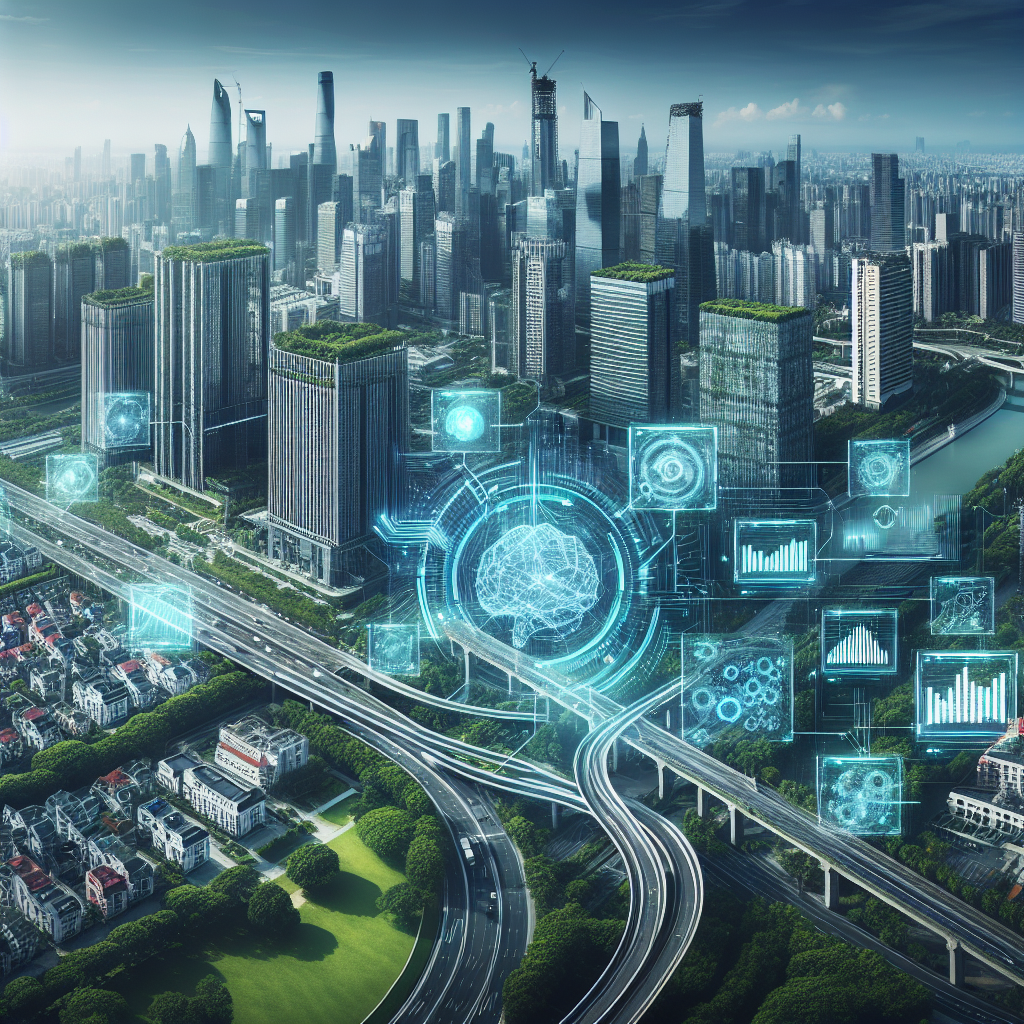In recent years, cities around the world have been experiencing unprecedented growth and rapid urbanization. As populations continue to swell, urban planners are facing increasing challenges in managing resources, infrastructure, and services to meet the needs of their citizens. In this fast-paced environment, the need for innovative solutions to urban planning and development has never been greater.
One of the most promising technologies that has the potential to revolutionize urban planning is artificial intelligence (AI). AI has the ability to analyze vast amounts of data, identify patterns, and make predictions that can help planners make more informed decisions. By leveraging AI, cities can optimize transportation systems, improve energy efficiency, enhance public safety, and create more sustainable and livable environments for their residents.
One of the key areas where AI can make a significant impact is in transportation planning. Traffic congestion is a major issue in many cities, leading to increased travel times, air pollution, and frustration for commuters. AI can help planners analyze traffic patterns, optimize signal timing, and predict future congestion hotspots. By using AI-powered algorithms to control traffic flow, cities can reduce congestion, improve air quality, and enhance the overall efficiency of their transportation systems.
AI can also be used to improve energy efficiency in urban environments. By analyzing data on energy consumption, building performance, and weather patterns, AI algorithms can identify opportunities for energy savings and help cities develop more sustainable energy policies. For example, AI can optimize the operation of smart grids, manage energy demand during peak hours, and identify buildings that are not meeting energy efficiency standards. By implementing AI-powered solutions, cities can reduce their carbon footprint, lower energy costs, and create a more sustainable urban environment.
Public safety is another area where AI can play a crucial role in urban planning. By analyzing crime data, social media feeds, and other sources of information, AI algorithms can help law enforcement agencies predict crime hotspots, allocate resources more effectively, and prevent criminal activity before it occurs. AI-powered surveillance systems can also help cities monitor public spaces, identify potential security threats, and respond quickly to emergencies. By leveraging AI for public safety, cities can improve their overall security and create a safer environment for their residents.
In addition to transportation, energy, and public safety, AI can also be used to enhance the overall livability of urban environments. By analyzing data on air quality, noise levels, green spaces, and other factors that impact quality of life, AI algorithms can help planners design more sustainable and healthy cities. For example, AI can recommend the optimal location for new parks, identify areas that need additional greenery, and help cities develop strategies to reduce noise pollution. By leveraging AI for urban planning, cities can create more livable environments that promote the well-being and happiness of their residents.
Despite the numerous benefits of leveraging AI for urban planning and development, there are also challenges and concerns that need to be addressed. One of the main challenges is the lack of data and the need for high-quality, reliable data sources. AI algorithms rely on large amounts of data to make accurate predictions, so cities need to invest in data collection and management systems to ensure the success of AI-powered solutions.
Another challenge is the potential for bias in AI algorithms. If the data used to train AI models is biased or incomplete, the algorithms may produce inaccurate or unfair results. To address this issue, cities need to ensure that they have diverse and representative datasets, and that they are transparent about how AI algorithms are being used in the planning process.
Finally, there are concerns about privacy and security when it comes to using AI for urban planning. AI algorithms rely on large amounts of personal data, such as location information and social media feeds, which can raise privacy concerns among residents. Cities need to implement robust data protection measures and ensure that they are complying with relevant data privacy regulations to build trust with their citizens.
In conclusion, leveraging AI for better urban planning and development has the potential to transform cities and create more sustainable, efficient, and livable environments for their residents. By harnessing the power of AI to analyze data, predict trends, and optimize systems, cities can address the complex challenges of urbanization and create smarter, more resilient cities for the future.
FAQs:
Q: How can AI improve transportation planning in cities?
A: AI can analyze traffic patterns, optimize signal timing, and predict congestion hotspots to reduce traffic congestion, improve air quality, and enhance the overall efficiency of transportation systems.
Q: What are some examples of how AI can improve energy efficiency in urban environments?
A: AI can optimize the operation of smart grids, manage energy demand during peak hours, and identify buildings that are not meeting energy efficiency standards to reduce energy costs and lower carbon emissions.
Q: How can AI enhance public safety in cities?
A: AI can analyze crime data, social media feeds, and other sources of information to predict crime hotspots, allocate resources more effectively, and prevent criminal activity before it occurs.
Q: What are some ways that AI can improve the livability of urban environments?
A: AI can analyze data on air quality, noise levels, green spaces, and other factors that impact quality of life to help planners design more sustainable and healthy cities that promote the well-being and happiness of their residents.

